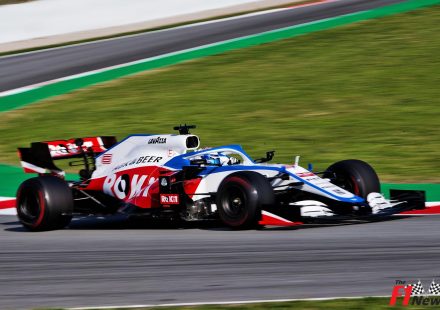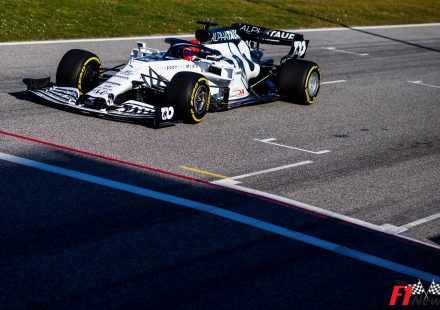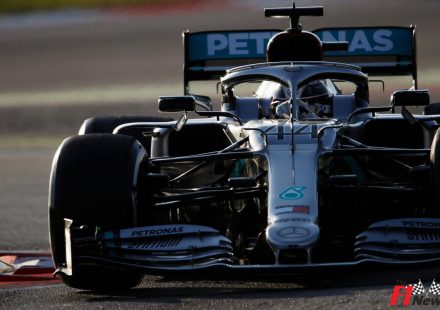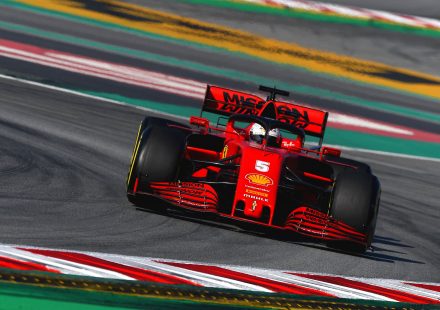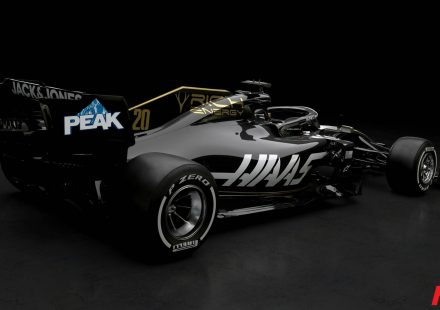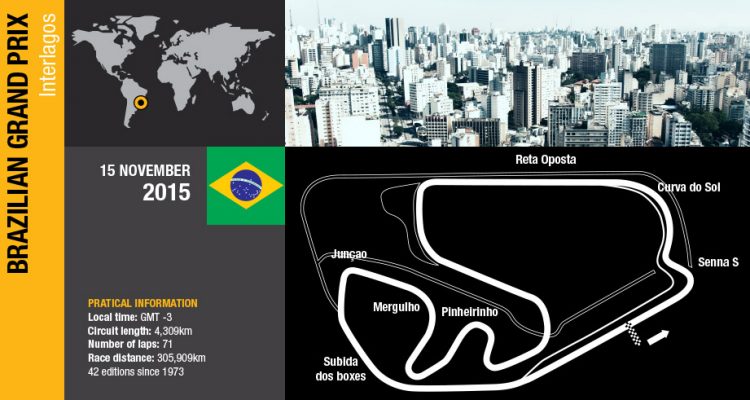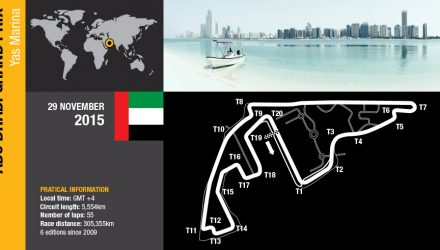Rémi Taffin, Director of Operations
Last year, we were a little nervous going to Interlagos on account of the altitude and the effects on the turbocharged power units. However, having had one year of experience and the Mexican Grand Prix last week we know that the parts can cope with the main issues. Every challenge we had in Mexico – high turbo rotation, cooling, downforce levels, long periods of wide open throttle – we see in a lesser degree in Brazil so the test seems less stern by comparison.
Our workload this weekend will be high as we will introduce our new PU specification. The improvements, which include an upgraded ICE, were available in Austin but the weather conditions meant we would not have been able to get representative data. We expect to run from free practice on Friday and complete as many laps as possible to cross-check the findings from the multiple dyno runs conducted at Viry.
Of course we will be pushing for good results to end the year, but the on-track performance improvement will be moderate. The main objective is to give direction for the next phase in development and create a good baseline going forward into the winter.
Renault 2015 Fast Facts
The weather in Brazil can be very changeable, ranging from hot and dry to very rainy. More often than not, however, the conditions are humid as the menacing rain clouds gather over the hills and the long range weather forecast for this weekend is on and off showers. The combination of the heat, rain and high altitude drastically reduces the air density so to produce the same power the revs will be a lot higher.
To combat further loss of power, engineers may use richer engine and fuel mixes. There are fewer risks involved in doing this at Interlagos than normal since the lower ambient pressure gives the internals of the engine an easier life.
As in Mexico, the wing levels will look like high downforce settings, but the drag produced will be relatively low due to the lower air density. The choice of wing is not immediately straightforward since engineers will want to generate grip in the twisty Sector 3 but not compromise straightline speed on the pit straight.
The first corner of the Interlagos track is famed for its spectacular overtaking opportunities as cars outbrake each other through the off camber left hand turn that also drops sharply downhill. It is a major challenge for the PU as well as it is the only time in the season when they will be at such a sharp incline. The lubricants in the engine internals move suddenly to the left, which can move the fuel or oil away from the pick-ups of the pumps, which can be momentarily starved.
Renault engines have won nine times at Interlagos, with René Arnoux taking the first win in 1980. Nigel Mansell won in 1992, with Schumacher, Hill and Villeneuve taking victory from 1995 – 1997. Red Bull Racing Renault was victorious in 2009, 2010, 2011 and again in 2013.
Focus on…Brazilian GP 2005
This year’s Brazilian Grand Prix will be the tenth anniversary of Fernando Alonso’s first drivers’ title for Renault. After a hard-fought year, the Spaniard sealed his first-ever crown with a podium at Interlagos, becoming the youngest World Champion (at the time). It was also Renault’s first title since 1997 and the first as Renault F1 Team. Rémi Taffin, Fernando’s engine engineer in Brazil, recounts a stressful weekend:
‘In 2005 we had produced a good car and had performed well, winning six Grands Prix in the first part of the year with Fernando and one more with Giancarlo [Fisichella]. But it had been a very competitive season and McLaren were very strong.
‘By the time we arrived in Brazil at the end of September, Fernando and Kimi Raikkonen were still both in contention for the drivers’ title. Due to the good start to the season we knew that Fernando just needed a podium to win, but we didn’t take anything for granted as the McLarens were getting better and better. In fact they had won all of the races since Germany at the end of July, so we were under a lot of pressure.
‘As a team we were quite young. Over half the Renault personnel from Viry had never won a championship, or been in contention for one, and of course the Viry-Enstone partnership was still relatively new. But there were still a number of ex-Benetton mechanics and engineers who had known the glory days of Schumacher in the 1990s so they helped to settle our nerves and motivate us when we had doubts. Nevertheless I remember we were conservative in the garage, to the point of being paranoid. I think I must have checked everything at least three times…
‘The weekend started well when we got pole for Fernando. He converted it into the lead, but he didn’t hold it for long as both the McLarens got past. From that point on we knew we needed to hold position to win, so it was about being safe, not taking risks and getting to the end. It seemed to take an eternity! The race went well with no particular problems, and Fernando did a great job to keep focused, despite the huge amounts of radio chatter going on. He filtered the information he needed and he got the podium to take the title. The podium was great – very well natured and the comments between Kimi and Fernando afterwards showed how much respect they had for each other.
‘Naturally there was a bit of a party after the race. After we got back to France we had a celebration but it was quickly back to work as the constructors’ championship was still up for grabs and very tight. We needed to see it through – and then celebrate after China!’
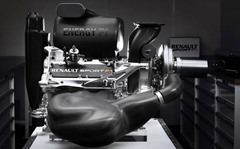 Power Unit details: ICE
Power Unit details: ICE
Interlagos sits in the upper bracket for ICE difficulty. The circuit may be short, but the long, uphill pit straight takes up a considerable percentage of the lap. The driver will be at full pedal travel for around 15secs, around 25% distance, or 20% of the overall lap time. Good acceleration is critical here as Turn 1 is an overtaking opportunity, but the engines will be straining on the edge of their power as the elevation change is just shy of 40m from the exit of Turn 12 to the braking point of Turn 1.
From the exit of Turn 2 to the entry for Turn 6 the driver is at full throttle for a further 17 secs, with just a dab on the brakes through Turn 4. The track goes downhill through the Curva del Sol, with the car gaining further momentum, but then climbs back up to the Ferradura. To maintain the speed while dealing with the change of gradient, the internals of the engine will be heavily loaded.
From Turn 7 to 12 the circuit gets very twisty, which loads and unloads the ICE in very quick sequence. Coming after such a sustained period of full throttle, it’s hard on the ICE, but difficult for engineers to find the right compromise in mappings between good top speed and effective acceleration.
Interlagos is the bumpiest permanent track of the year due to the intense weather conditions, relative lack of use and location. The large bumps can make the car temporarily ‘take off’. Even if it’s just for a second, with no load running through the wheels the engine suddenly hits the rev limiter, which puts the internal parts under huge stress.
Turbocharger
Interlagos sits 800m above sea level. Until the Mexican GP it was the highest race of the year by a long way, but now seems low by comparison to the giddy heights of Mexico City! The turbo will be spinning at a much higher speed to generate the same power as a sea level event, rotating at very close to its maximum, but having worked reliably at the 2,200m Mexican GP, Interlagos is no longer the sternest test of the year.
Monitoring the turbo is nevertheless one of the main challenges of the weekend for the engineers and after each session it will be thoroughly checked over for any mechanical wear. It will also be checked for ingested dust or sand, which can often be a problem in the gritty Sao Paulo atmosphere.
MGU-K
While the ICE and turbo are under a lot of pressure, the other parts of the PU are not too stressed at Interlagos. The MGU-K can recover energy through the short corners, notably Turn 1, 8 and 10. The hardest test for the K presents itself in qualifying. To open the fast lap you must optimize the top speed at the end of the long final straight on the out lap by using the K for additional power boost but starting too low on electrical energy for the qualifying lap can compromise the lap time.
Turn 1 is the hardest stop of the circuit as the cars arrive at over 330kph and drop to just 110kph for the entrance. The energy going through the brakes at this point is enormous and will recharge the battery ready for deployment on the straight to the ICE from Turn 2 to 4.
MGU-H
Due to the long periods of full throttle, the MGU-H has ample opportunity to recover lost exhaust energy. However, energy recovery is not necessarily critical as fuel consumption is relatively low due to the high altitude and lower air density.

